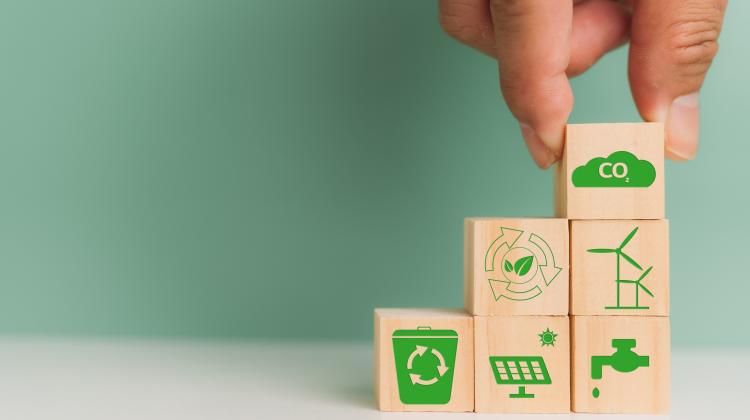From July 1 of this year, the so-called SUP Directive (Single Use Plastics) will come into force in Poland. According to it, among other things, plastic caps must be an integral part of bottles. This is the result of the threats associated with the still large number of waste accumulating in the natural environment.
Single-use bottles for carbonated drinks made of poly(ethylene terephthalate) (PET) have been with us for many years - precisely since 1973, when Du Pont engineer Nathan Wyeth developed and patented this innovative packaging[1]. From the very beginning, it was known that soft PET, which easily takes the shape of a bottle in the blow molding process, is not a suitable synthetic material for making caps. Here the choice fell on high-density polyethylene (HDPE), which, like PET, can come into contact with food[2]. HDPE is a popular material today not only for the production of caps but also for reusable packaging, e.g., for storing food in the refrigerator. Thus, from the very beginning, the bottle was a creation consisting of two, or even three different materials, because the paper label must also be taken into account.
Each component of the bottle separately was a valuable raw material for the production of other materials through material recycling, due to the fact that polymer materials used for food contact must be characterized by high purity and, consequently, quality. Over the years, many interesting applications have been developed for the use of waste from bottles, for example, fibers began to be produced, and then the popular fleece fabric[3]. Caps could be used to produce packaging for industries other than food. From the very beginning of waste management, it was natural to separate the cap from the bottle, which was popularized in Poland, among others, through various charitable campaigns[4].
If it was a good solution, then where was the problem? The challenge turned out to be caps that were not completely torn off the bottle, where they remained in the form of a characteristic collar on the neck of the bottle. This small remnant caused that factories processing bottles into recyclate had to develop methods of separating PET from HDPE, mainly due to differences in the processing temperatures of both materials. At PET processing temperatures, which are above the melting temperature of this material (265°C)[5], where the decomposition temperature (carbonization) of HDPE is 200°C5. Separated cap fragments, due to their size, were not an interesting material for material recycling and ultimately went to incinerators for energy recycling. Moreover, it was observed that separating caps was not as popular as expected, and people threw away bottles with caps. Worse, it was observed that caps litter the natural environment due to their size and ease of being carried by wind and water.
In the face of threats related to the still large number of waste in the natural environment, Directive 2019/904 of the European Parliament and of the Council of June 5, 2019, referred to in the media as the SUP Directive (Single Use Plastics)[6], was introduced in the Republic of Poland in the form of the Act of April 14, 2023[7]. According to it, among other things, caps must be an integral part of bottles, which will come into full force from July 1, 2024. From that time, waste sorting companies and recyclate producers will take on the role of separating packaging elements, which in principle was already happening. In fact, this will end the point of collecting caps, but as long as there are collection points, you can still do it - remembering to dismantle the whole. In addition, cap collectors can expand their ecological interests to jar lids, e.g., from coffee, which are also made of HDPE.
However, the situation may change quickly. One of the carbonated drink manufacturers has started work on introducing bottles made entirely of PET. In this product, the cap is made of PET and a stiffer recyclate called rPET. The use of a new shape allowed to obtain a finished product to replace traditional HDPE caps, making the separation of bottle components pointless. However, new regulations will have to be introduced for mass events, where you can still consume drinks in bottles, but without caps, and bar staff at sports halls or stadiums persistently tear off caps from bottles.
[1] Nathaniel C. Wyeth, US Patent 3733309 “Biaxially Oriented Poly(ethylene terephthalate) Bottle” May 15, 1973
[2] S.E. Selke, R.J. Hernandez, Packaging: Polymers for Containers, in Encyclopedia of Materials: Science and Technology, edited by: K.H. Jürgen Buschow, Robert W. Cahn, Merton C. Flemings, Bernhard Ilschner, Edward J. Kramer, Subhash Mahajan, Patrick Veyssière, Elsevier, 2001, pages 6646-6652, ISBN 9780080431529, https://doi.org/10.1016/B0-08-043152-6/01175-X.
[3] https://www.recyclingtoday.com/news/polartec-recycled-pet-bottle-fabric/ (accessed on February 16, 2024)
[4] https://sercenanakretki.pl/ (accessed on February 16, 2024)
[5] Polymer Data Handbook edited by James E. Mark, 1999, Oxford University Press, Inc.
[6] Directive of the European Parliament and of the Council No. 2019/904 of June 5, 2019, on the reduction of the impact of certain plastic products on the environment https://eur-lex.europa.eu/legal-content/PL/TXT/PDF/?uri=CELEX:32019L0904 [access: 2023-08-17]
[7] Act of April 14, 2023, amending the act on the obligations of entrepreneurs in the management of certain wastes and on the product fee and certain other acts [Journal of Laws 2023.877] https://dziennikustaw.gov.pl/D2023000087701.pdf [access: 2023-08-17]




